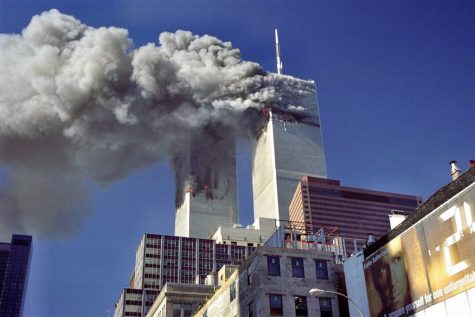Ad Astra presents space exploration, cinematically mesmerizing and tonally beautiful
“Ad Astra” is a science fiction drama by director James Grey, who has previously made four feature films. The film’s cast includes big names such as Brad Pitt, Tommy Lee Jones and Donald Sutherland, all of whom do an amazing job to portray the emotional toll of being so distant from home.
The film focuses on Pitt’s character, Roy McBride, who has been summoned by the American army to go on a voyage to Mars to communicate with his long-lost father, whom the army is hoping to contact. McBride almost immediately begins to doubt his father’s security and protection by the American government, who has held a resentfulness towards him due to a chain of unfortunate events.
This film is very impressive on a cinematic level. Since the environment revolves around space and the vast unknown, much of the lighting relies upon vibrant colors that emerge from a dark backdrop. Every shot in the film feels planned and cared for, symmetry being heavily used throughout the film. There is a grand palette of colors that flood the screen in some scenes, made possible by fictional technology that modifies the environment.
The cinematography and camera work were done by Hoyte van Hoytema, who was also the cinematographer for “Dunkirk” and “Interstellar”. The camerawork is only one of the many aspects that is purposefully slow and drawn out, which is not necessarily a bad thing. The overall empty isolationist tone is also made possible by Max Richter’s beautiful score and Brad Pitt’s calm, deep voice.
Naturally, one will compare this film with Stanley Kubrick’s “2001: A Space Odyssey” because of how genre-defining “2001” was for science fiction and space exploration. As isolationist and as slow-paced both films are, I also saw much inspiration from Andrei Tarkovsky’s 1971 film “Solaris” based off of Stanisław Lem’s book of the same name. Both “Solaris” and “Ad Astra” deal with reconnecting with one’s past and reconnecting with significant social figures, and the way both films go about telling that story is similar, using voice overs and poetic messages. Cinematically, the symmetry and tracking shots reveal inspiration from both Kubrick and Tarkovsky.
The underlying chaos of threatening malfunctions in the space shuttle, which is overlapped by the silent and calming sounds of ripples in the atmosphere and breathing, is similar to that of David Finch’s “Gone Girl”. The way it is shot is also similar, with both dependent upon contrast. They both hold the same calm, yet unknowing and worrisome tone due to the pacing.
Where this film falls short is in its uniqueness and lack of ability to show rather than to tell. Many critics have been holding this film up to be a masterpiece and decade-defining, but it simply is not. There was nothing very new that this film presented that hadn’t already been a standard in science fiction and nothing symbolic was apparent. The film was trying to send a very important message on when to give up and times of disappointment, but everything was very realistic and direct rather than poetic or put up to interpretation.
Another particular shortcoming was apparent through Brad Pitt’s multiple voice overs. It rid the film of any interpretation and was simply used for exposition. Films such as “Goodfellas” used helpful voiceovers to express actual facts, for it was based off of a true story, unlike “Ad Astra”, which paid too much attention to expositing rather than symbolically displaying.
This film was worth watching in the theater and the cinematography will often be brought up by many cinephiles for the next few years, but the film is not revolutionary or as artistic as many would like to believe. It is a dramatic tale that should be viewed with patience and an admiration for production value.








